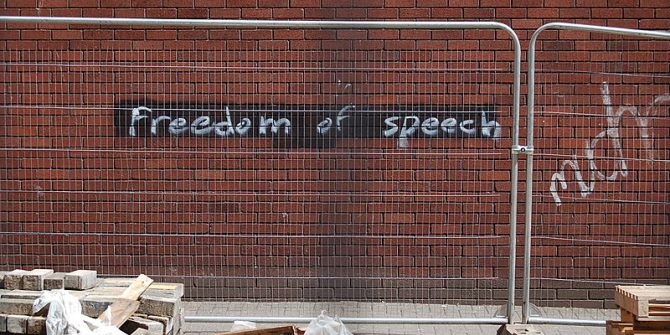 With the changing climate in contemporary international relations as well as domestic politics in India, it is important to take a closer look at new developments in India’s foreign policy. Vaishnavi Mulay explores the transformation of the Look East policy into the Act East policy and its implication for India and China.
With the changing climate in contemporary international relations as well as domestic politics in India, it is important to take a closer look at new developments in India’s foreign policy. Vaishnavi Mulay explores the transformation of the Look East policy into the Act East policy and its implication for India and China.
With the changing climate in contemporary international relations as well as domestic politics in India, it is important to take a closer look at new developments in India’s foreign policy. The Act East Policy is an integral part of this new changing climate. The National Democratic Alliance (NDA) government in India, outlined the Act East Policy in November 2014 within six months of assuming power. This article explores the shift from the Look East policy to the Act East policy, and focuses on the policy’s implication in two main regions: India’s Northeast and China.
From Look East to Act East
The Act East Policy is a successor to the Look East Policy, which was launched in 1992, the same time as the start of India’s economic liberalisation policy, under radically different geopolitical and economic circumstances.
The Look East policy, perhaps due to half-hearted commitment, had resulted in lacklustre results, with most of the policy being contained to just rhetoric. India’s relevance and influence in these regions was restricted, while at the same time Chinese influence kept growing (threatening the Indian hegemony in South Asia). Hence, since 2014, India has been working not only to Look East but to Act East as well. And it appears the government has taken substantial positive steps towards building close relationships with India’s ‘East’ partners. PM Modi’s state visits to Mongolia, Japan, China, Malaysia, Myanmar, Vietnam, Singapore, South Korea, as well as recent Japanese Prime Minister’s Visit to India are examples of the current government actively pursuing the Act East policy. Common ties of Buddhism and culture, a shared history of colonialisation etc. are used in the Act East policy rhetoric to build a sense of togetherness.
Implications for Indo-China relations
When looked at, with regard to China, the Act East policy appears to be a whole different ball game. The Act East policy goals then appears to be two-pronged: boost India’s standing as a regional power by initiating increased cooperation in the region, and act as a counterweight to the increasing strategic influence of China.
Ideally, cooperation with China would be a part of India’s Act East policy. Good relations and smooth cooperation between India and China are even more pertinent when we consider India being the second largest shareholder of the Asian Infrastructure Investment Bank (AIIB) and an equal partner in the New Development Bank (NDB).
However, despite this, there remain a few sour points. Most recent of these is the Doklam Standoff. Another significant issue is the South China Sea, which happens to be China’s core foreign policy issue. There is no consensus among ASEAN nations on how to deal with China on the issue. More than 40 percent of India’s trade passes through the South China Sea.
India’s stance on the issue has grown stronger since 2014. In, perhaps, a contradictory decision, the same time the Act East policy was launched in the ASEAN summit, Modi also declared India’s support for the South China Sea to be treated as international waters. This situation was further exacerbated by India’s recent decision to continue its support for the ruling against China with regard to the South China Sea
Furthermore, India’s state-owned oil company ONGC Videsh Ltd (OVL) accepted the Vietnamese invitation to explore oil and gas in Blocks 127 and 128. This was not just an instance of India’s desire to deepen its friendship with Vietnam, but another passive aggressive stance towards china.

Natula peak, Sikkim, India-China border. Photo credit: Vinaay Vars, CC BY-SA 3.0
It appears that India’s policy trajectory toward China is changing. India, it seems, has started to pursue a policy of internal and external balancing in the ‘East’ in an attempt to protect its core interests which clash with China. The Act East policy, thus, appears to be India’s use of soft power in pursuit of more strategic goals as compared to the Look East policy which was mostly rhetoric and focused on economic alliances. Act East can be seen as an attempt to balance the power in the region. India might not be able to match China in military power, but use of soft power to assert its position is becoming evident from the events played out since 2014.
Theoretically, a balance of power assumes the formation of counterbalancing alliances (which can be seen with the Act East Policy projects mentioned above) and the phenomena of passing the buck of balancing to another state. It appears that India has been passed the buck by a few ASEAN countries. China is too big and too powerful to be ignored by the regional states. Southeast Asian countries would prefer and favour India playing a more active countervailing role in the region rather than a country like the USA because of its proximity to the region. The states in China’s vicinity can be said to be seeking to expand their strategic space by reaching out to other regional and global powers. In this case, smaller states in the region, such as Vietnam and the Philippines, look to India to act as a vital actor to counter increasing Chinese hegemony. Strategically this is a clever move as officially India does not follow a policy of containing China, cloaked by the Act East policy, India is able to assert its presence in the region while at the same time this goes hand in hand with India’s efforts to strengthen ties with ASEAN.
Thus, the Act East policy can also be considered as a way of soft balancing the power in the east. The Act East policy along with several initiatives launched by the government for rapid economic development of the country (‘Make in India’, ‘Skill India’, ‘Digital India’, promoting energy security, creating infrastructure, and building smart cities) can be considered as a strategic plan to generate greater flexibility and political space to contend with the increasing assertiveness and unilateralist approach of China.
Conclusion
Modi’s use of soft power while implementing the Act East policy, such as building upon common ties of Buddhism and cultural ties, state visits, focusing on tourism and increasing connectivity, people-to-people contacts, and a great use of rhetoric with the ‘east’ could be seen as a friendly non-threatening strategy backed by good will internationally.
It’s a win-win situation for India: strengthening ties with ASEAN countries; involving the Northeast on the national policy agenda, holding a stand against China; and receiving support from ASEAN countries as well as the USA. In the long term, this strategy of not being outrightly aggressive with its relations with China will help in achieving international legitimacy for whatever actions India decides to take further with regard to the Act East policy.
This article gives the views of the author, and not the position of the South Asia @ LSE blog, nor of the London School of Economics. Please read our comments policy before posting.
About the Author
 Vaishnavi Mulay is a Programme Executive at the Ananta Aspen Centre, a foreign and public policy think tank. She graduated from LSE with a degree in MSc International Relations and has interned at the UNESCO Cluster Office for Bhutan, India, Maldives and Sri Lanka in the Social and Human Sciences sector. She has also volunteered at Child Rights and You (CRY). She is passionate about international relations, gender and human rights.
Vaishnavi Mulay is a Programme Executive at the Ananta Aspen Centre, a foreign and public policy think tank. She graduated from LSE with a degree in MSc International Relations and has interned at the UNESCO Cluster Office for Bhutan, India, Maldives and Sri Lanka in the Social and Human Sciences sector. She has also volunteered at Child Rights and You (CRY). She is passionate about international relations, gender and human rights.







